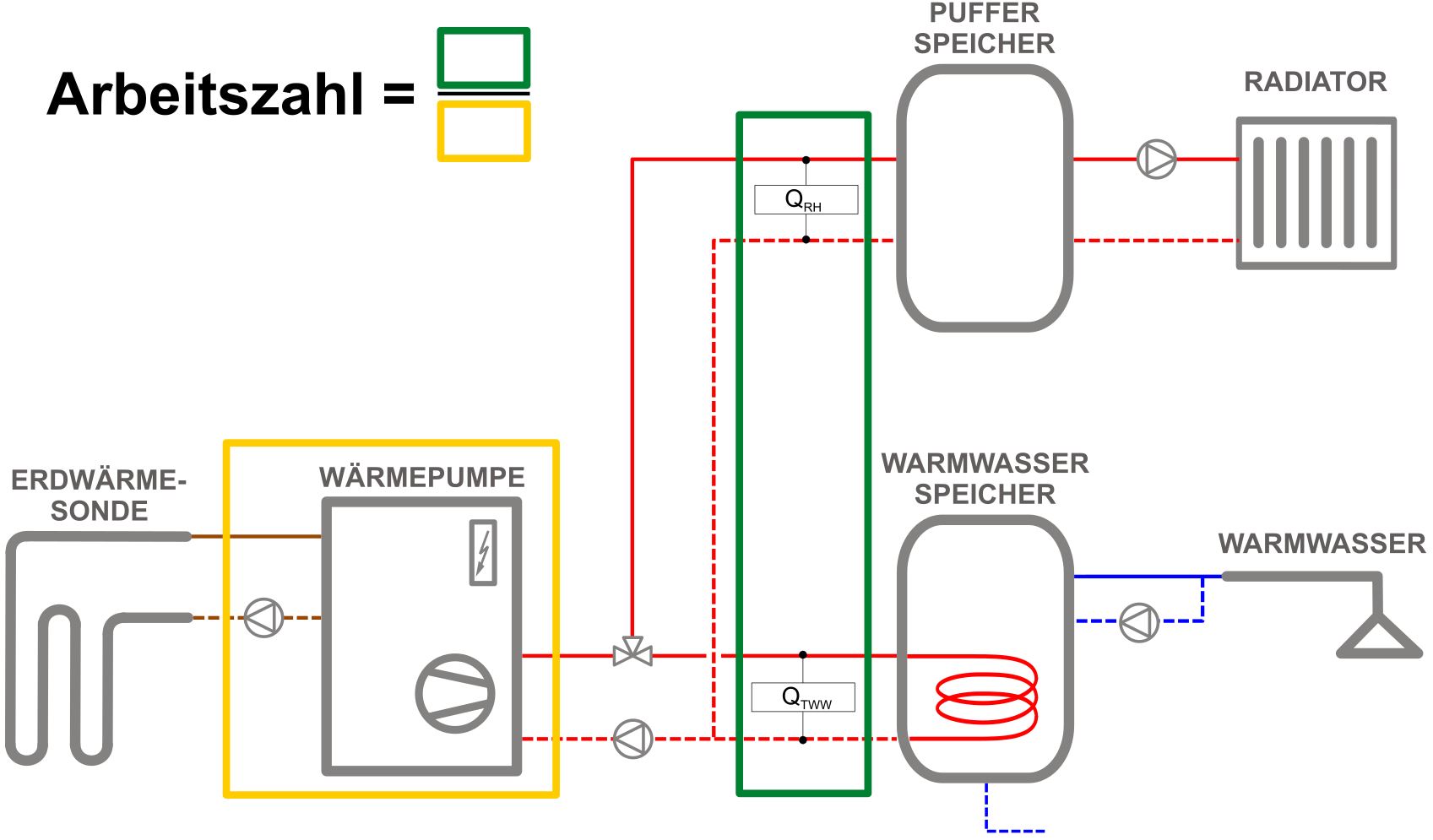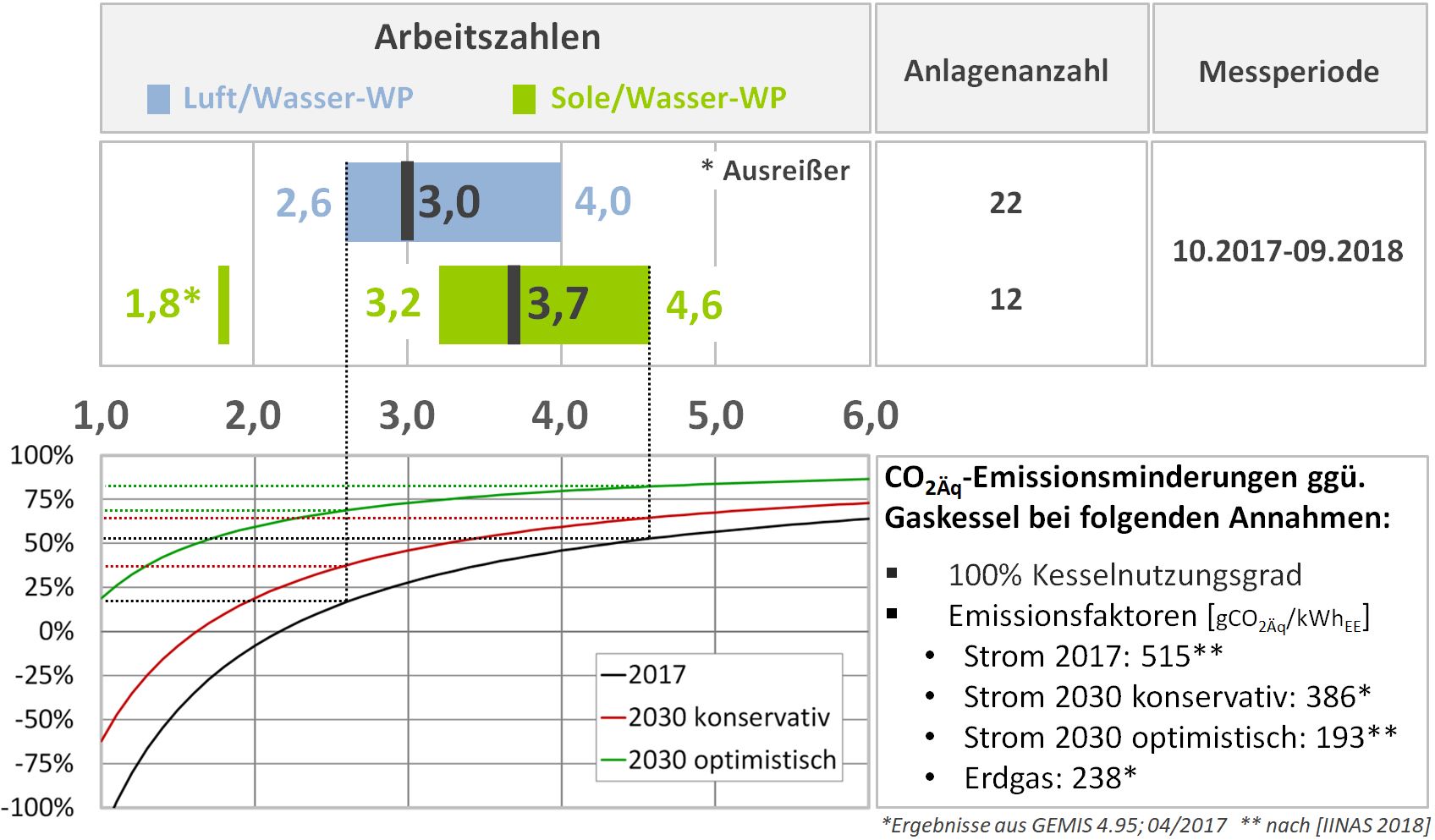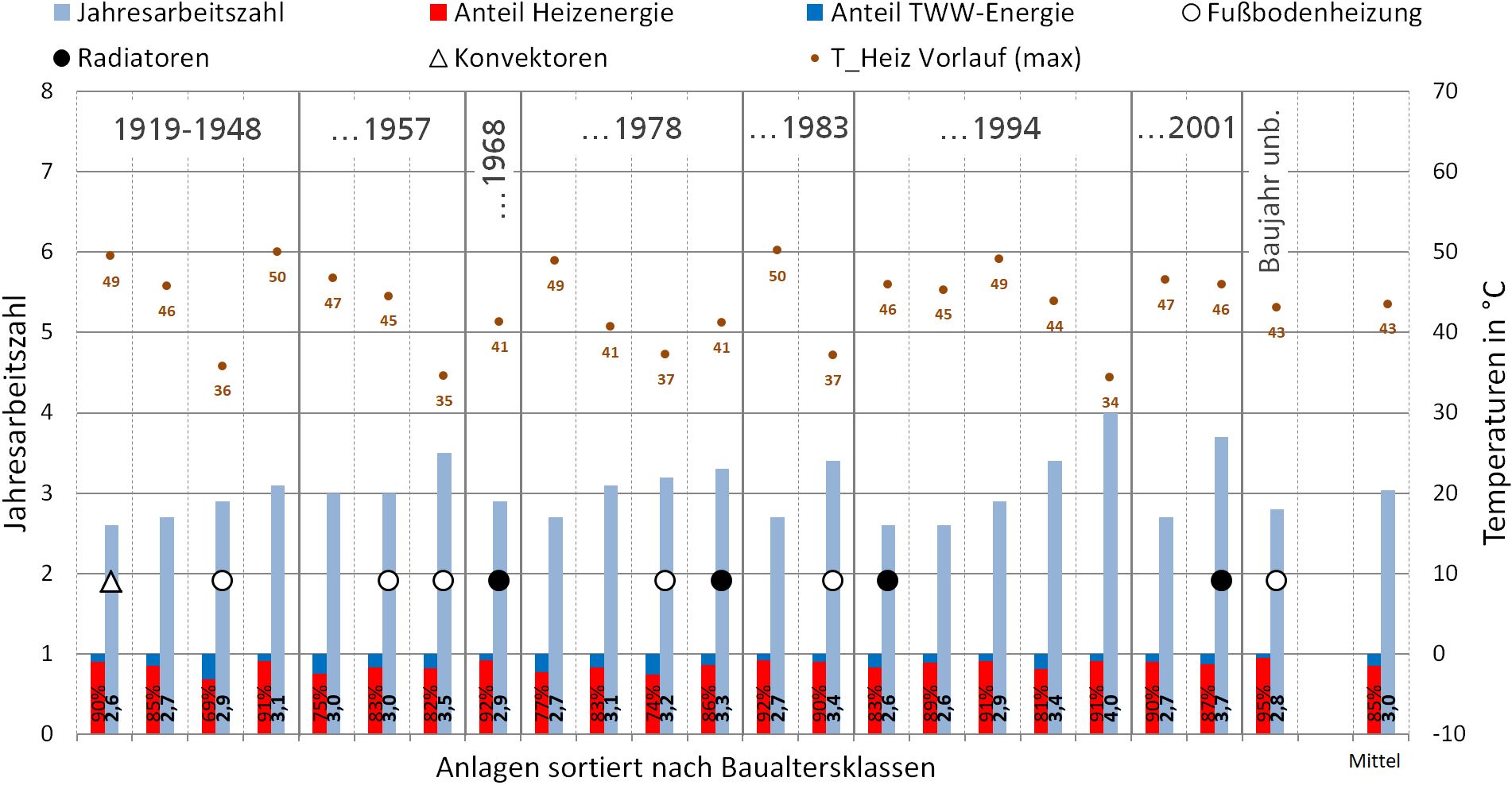| Duration: | 01.12.2014 - 30.09.2019 |
| Contracting Authority / Sponsors: | German Federal Ministry for Economic Affairs and Energy (BMWi), Projektträger Jülich (PTJ) |
| Project Partners: | ait-deutschland GmbH, Bosch Thermotechnik GmbH, Elektrizitätswerk Mittelbaden GmbH, Glen Dimplex Wärmepumpentechnik GmbH, Lechwerke AG, Max Weishaupt GmbH, Ochsner Wärmepumpen GmbH, Stadtwerke Stuttgart GmbH, Stiebel Eltron GmbH & Co. KG, Vaillant Deutschland GmbH & Co. KG, Viessmann Werke GmbH & Co. KG |
| Project website: | wp-monitoring.ise.fraunhofer.de |
WPsmart im Bestand: Heat Pump Field Trial – Focus Existing Buildings and Smart Control



The success of the “Energiewende” depends significantly on the refurbishment of the existing buildings. Beside construction measures for reducing the space heating energy demand the efficiency improvement of the heating system has to be focused. Another important component within the transformation of the energy system is the appropriate combination of the sectors electricity and heat. Thus, in December 2014 the research project “WPsmart im Bestand” (“HPsmart in Existing Buildings”) was launched. Under the lead of Fraunhofer ISE and together with heat pump manufacturers as well as utilities both research fields should be examined within one project.
Within four years knowledge about the efficiency of heat pumps in older single family houses with different refurbishment standards as well as heat pump´s flexibility for load management should be gained. The explicit project goals are:
- Identification of solutions for the appropriate application of heat pumps for space heating and domestic hot water in existing buildings
- Metrological monitoring of 100 heat pumps over three heating periods (20 of them over two heating periods with smart control)
- Energetically, ecologically and economically assessment of monovalent, monoenergetic as well as bivalent (hybrid) driven heat pump systems
- Determining the potential for services with applying the functionality provided by “SG Ready”-control
- Recommendations for system compatible control and design of future heat pumps systems („SG Ready 2.0”)
As shown in Fig. 2 a detailed metrological investigation of a huge amount of heat pump systems in individual applications will be carried out for a long period. The focuses are on monovalent or monoenergetic air and ground source heat pumps as well as bivalent (hybrid) systems, which additionally using oil or gas. After the first heating period 20 heat pumps are going to be transferred to smart operation serving grid or energy market needs. The remaining 80 heat pumps will keep the conventional operation mode over the whole three heating periods. The preparation of the smart control includes the development of appropriate strategies considering the “SG ready” certificated functionality.

Following an extension of the project until July 2019, the main evaluation period will run from July 2018 to June 2019. The measurement data will be finally evaluated in the second half of 2019 and the final results are expected to be published in early 2020. The final evaluation will cover 54 installations. The following evaluation contains interim results for the efficiency analysis of conventionally operated heat pumps (no external control via SG-Ready).
The interim evaluation covers the period October 2017 to November 2018. In doing so, 22 air source and 12 ground source heat pumps could be considered. The balance boundary for determining the SPF is shown in Figure 2. In addition to the mainly monoenergetic operation, 4 systems each with an additional oil boiler and an additional solar thermal system are being evaluated. The buildings were constructed between 1850 and 2001.
Figure 3 summarizes the bandwidths and mean values of the SPF, separated according to the heat sources outdoor air and ground. The higher SPF level of ground source heat pumps is mainly due to the higher heat source temperatures during the core heating period. In the lower part of the graph a simplified, static estimation of the CO2Eq emission savings of the heat pump systems compared to a gas condensing boiler is made. Using the 2017 emission factors and the lowest and highest measured SPF, the savings are between 17% and 53%. Projections of future emission factors show the positive contribution of the increasing penetration of renewable generation in the electricity sector. In a conservative scenario, savings in 2030 would be between 38% and 64%, while the optimistic scenario would lead to savings between 65% and 82%. This shows that despite increasingly green electricity, the efficiency of heat pumps will continue to play a significant role.
Figure 4 shows, among other things, the SPF and the maximum heating circuit flow temperatures per air source heat pump, sorted by age of building. It becomes clear that a wide range of results can be found in almost all ages of building. This shows that it is not so much the age of a building as the individual requirements that are decisive for efficiency and thus the ecological and economic result.